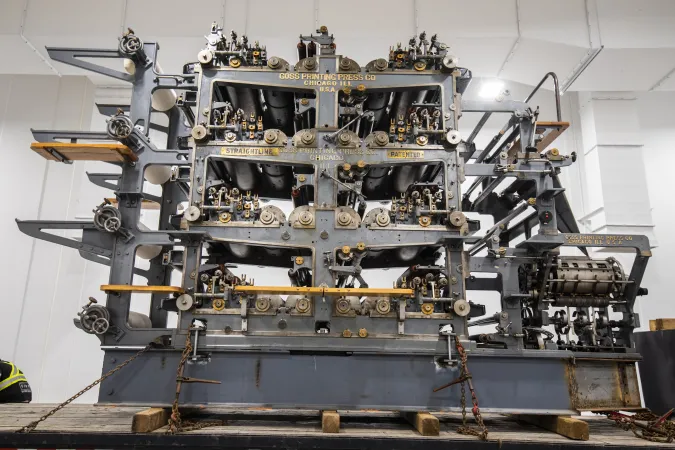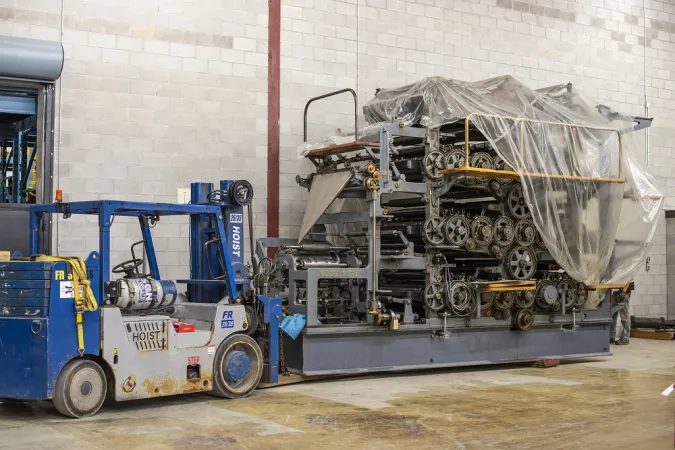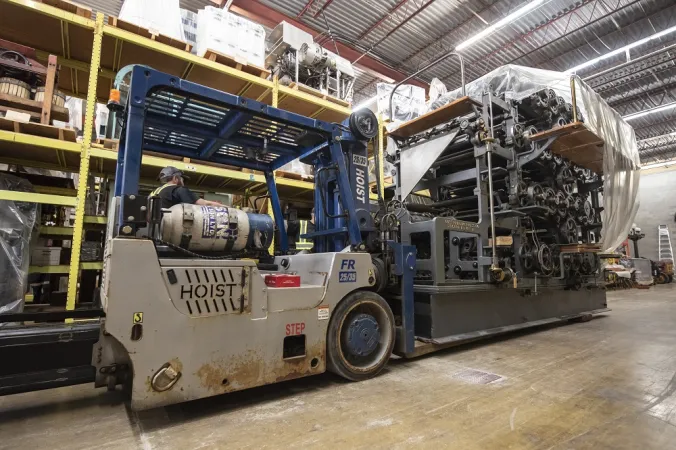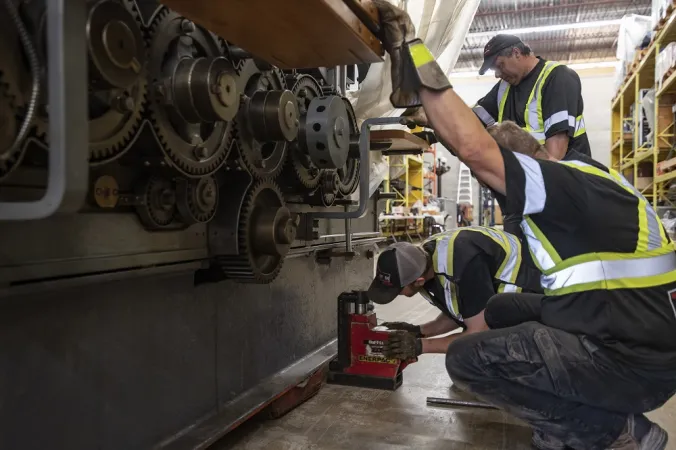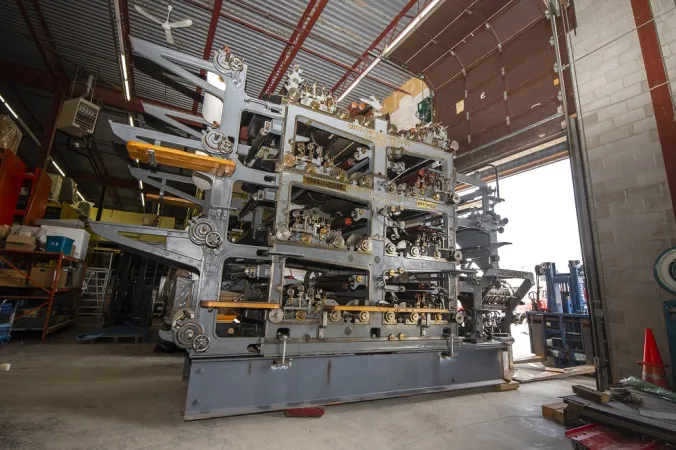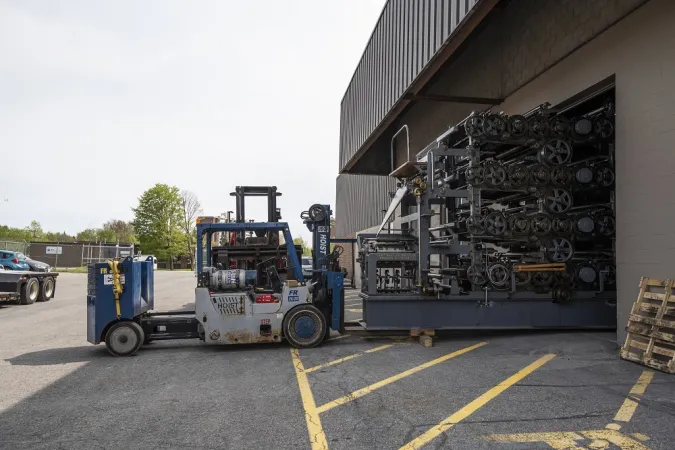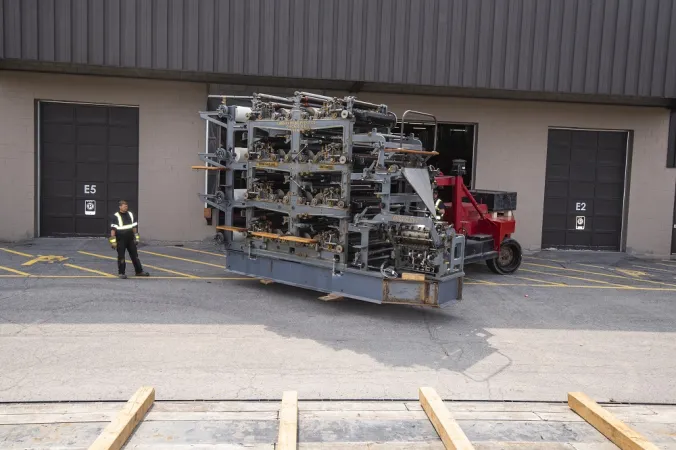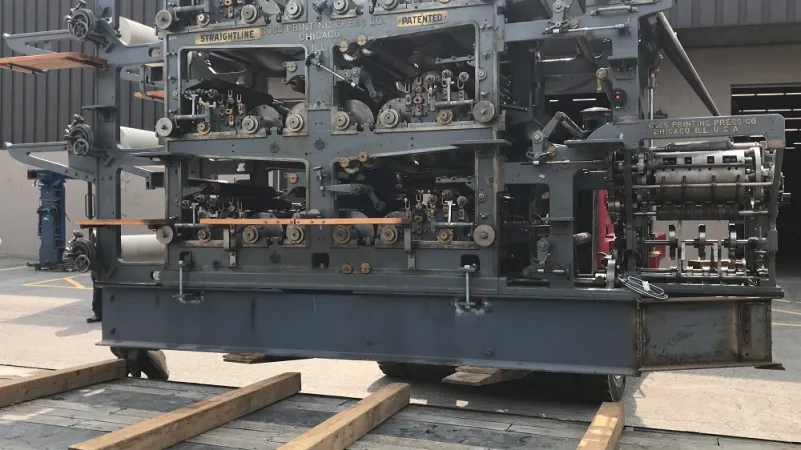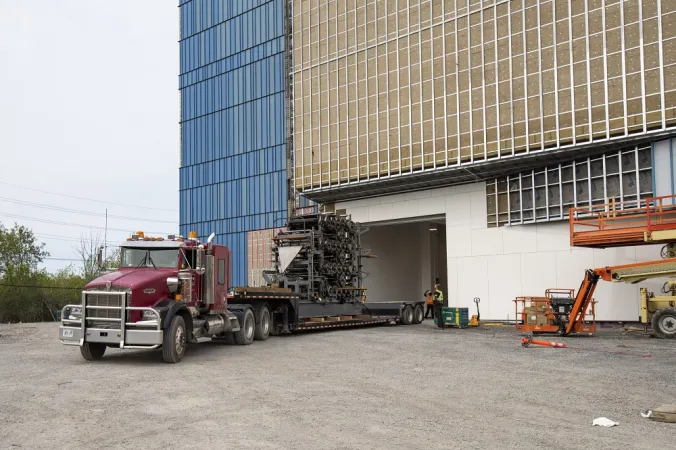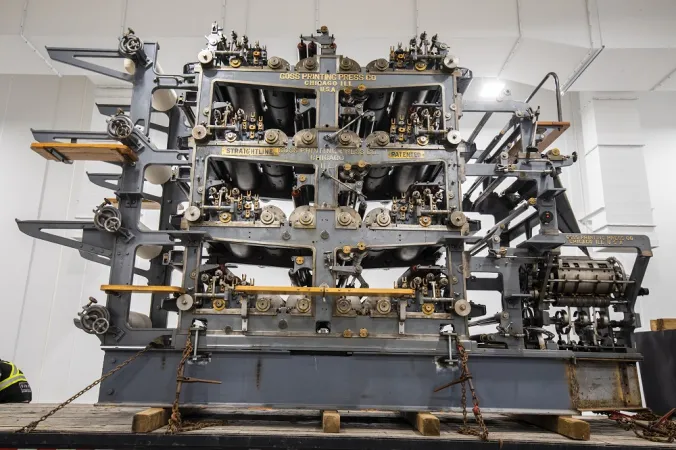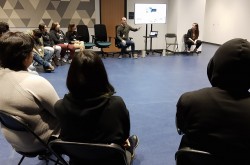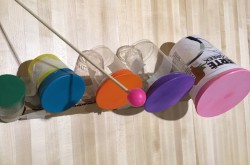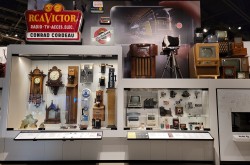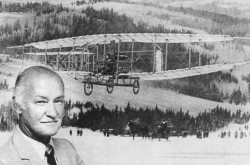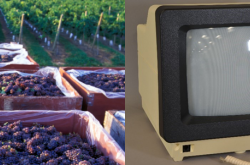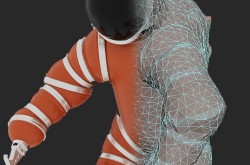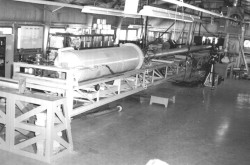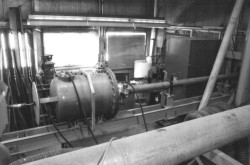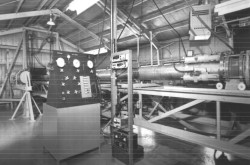Mammoth artifact finds a new home in the Collections Conservation Centre

Last week, a Goss printing press moved into Ingenium’s new Collections Conservation Centre in Ottawa. At 32 metric tons — the approximate equivalent of five African elephants — the press is one of the heaviest pieces in Canada’s national science and technology collection.
Made in 1899 and operated for several decades, the Goss press was more efficient than previous presses, allowing daily newspapers to be printed more quickly and in larger numbers. Considered small for an industrial printing press, the Goss press was used in Montreal, Edmonton, and Medicine Hat.
Until recently, a couple of cranes would have been necessary to move an object this heavy. Fortunately, workers had access to a forklift strong enough to drive the artifact out of its old resting place, at a storage warehouse located in close proximity to the Canada Science and Technology Museum. The press was then lifted onto a flatbed truck and driven — very carefully — down the street. At the new, purpose-built Collections Conservation Centre, the truck was able to drive right in and place the press on the reinforced floor. The whole process took around four hours.
The Collections Conservation Centre is a state-of-the-art facility designed to protect and showcase the Ingenium collection, which spans three national museums — the Canada Agriculture and Food Museum, the Canada Aviation and Space Museum, and the Canada Science and Technology Museum.
In late May 2019, the Goss printing press moved into Ingenium’s new Collections Conservation Centre in Ottawa. At 32 metric tons — the approximate equivalent of five African elephants — the press is one of the heaviest pieces in Canada’s national science and technology collection.
Transcript
In late May 2019, the Goss printing press moved into Ingenium’s new Collections Conservation Centre in Ottawa. At 32 metric tons — the approximate equivalent of five African elephants — the press is one of the heaviest pieces in Canada’s national science and technology collection.


